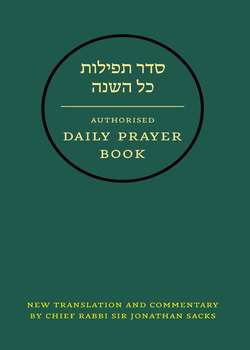Читать книгу Hebrew Daily Prayer Book - Jonathan Sacks - Страница 17
I. Numerical Structures
ОглавлениеAs we have seen, many of the prayers have an obvious three-part structure, but in some cases this is repeated in great detail on a smaller scale, as in fractals.
The most striking example is the weekday Amidah, which is composed of three parts: praise-request-acknowledgement. The first and last of these are each constructed in threes: three blessings of praise at the beginning, and three of acknowledgement at the end. Less obvious is the fact that the middle thirteen blessings – “requests” – also share this structure. There are six individual requests, followed by six collective ones, each divided into two groups of three. The individual requests begin with three spiritual needs (understanding, repentance, forgiveness) followed by three material ones (deliverance from oppression, healing, prosperity). The collective requests begin with three political-historical elements (ingathering of exiles, restoration of judges, and an end to internal strife – the “slanderers”), followed by the three spiritual bases of nationhood (the righteous, Jerusalem, and the restoration of the Davidic monarchy). The thirteenth, “Hear our voice”, stands outside this structure because it is not directed to any specific request but is, instead, a prayer that our prayers be heeded.
The number seven is also significant and always indicates holiness, as in the seventh day, Shabbat; the seventh month, Tishri with its Days of Awe; the seventh year, the “year of release”; and the fiftieth year, the Jubilee, which follows seven cycles of seven years. Seven in Judaism is not a simple prime number. It is the one-after-six. Six represents the material, physical, secular. Ancient Mesopotamia, from which Abraham came, originally used a numerical system based on the number six. Western civilization still bears traces of this in the twenty-four hour day (2 × 6 hours of light, plus 2 × 6 of darkness); the sixty (10 × 6) minutes in an hour, and seconds in a minute; and the 360 degrees in a circle (6 × 6 × 10). All of these originated in astronomy, at which the ancient Mesopotamians excelled. Judaism acknowledges the six-part structure of time and space, but adds that GOD exists beyond time and space. Hence seven – the one beyond six – became the symbol of the holy.
Six, too, is not a simple number in Judaism. This becomes evident when we read the story of creation in Genesis 1 carefully. The first six days fall into two groups. On the first three, GOD created and separated domains (1: light and darkness, 2: upper and lower waters, 3: sea and dry land). On the second three GOD populated these domains, each with its appropriate objects or life-forms (4: sun, moon and stars, 5: birds and fish, 6: land animals and man). The seventh day, Shab-bat, is holy because it stands outside nature and its causal-scientific laws.
Mirroring this pattern, the morning service is structured around the number seven: the three paragraphs of the Shema, surrounded by three blessings, leading to the seventh, the Amidah, which is the domain of the holy, where we stand directly in the presence of GOD. On holy days – Shabbat and Festivals – the Amidah has a sevenfold structure: the three opening and closing paragraphs, plus a middle paragraph dedicated to “the holiness of the day”.
It follows that sixfold structures in the Siddur signal the universe and creation. Thus, on weekday mornings we say six psalms (145–150) in the Verses of Praise. Kabbalat Shabbat also contains six psalms, corresponding to the days of the week, before Lecha Dodi, which represents Shabbat itself. The blessing after the Shema repeats the keyword Emet (“true”) six times to show how GOD’S love is translated into redemptive activity in a this-worldly time and space.
Many prayers such as El Adon (page 374) and Aleinu are constructed in a pattern of fours: four-line verses, each of four words. Often these reflect Jewish mysticism with its four “worlds”: Asiyah (Action), Yetzirah (Formation), Beriah (Creation) and Atzilut (Emanation). Merkavah mysticism, based on Ezekiel’s vision of the Divine chariot, is an important strand of early rabbinic prayer.
The number ten represents the “ten utterances with which the world was created” (the ten places in Genesis 1 where an act of creation is preceded by the words “GOD said”). That is why Baruch She-amar, the blessing before the creation section of the prayers, begins with a tenfold litany of phrases each beginning with the word “Blessed”.
Fifteen represents the fifteen steps between the courtyards of the Temple, the fifteen Psalms beginning “A Song of Ascent”, and the numerical value of the first two letters of GOD’S holiest name. Hence there are fifteen expressions of praise in the paragraph Yishtabach; fifteen adjectives following “the LORD Your GOD, true” at the end of the Shema in the morning; fifteen psalms in the Verses of Praise on Shabbat and Festival mornings; and so on. There are also more intricate numerical patterns.
These are not mere aesthetic conventions like, for example, the fourteen-line sonnet form or the four-movement structure of a symphony. As always in Judaism there is a matching of form to content, structure to substance. The Sages understood – as did the ancient Greeks, amply confirmed by modern science – that reality has a numerical structure. Mirroring this structure in prayer, we evoke the sense of a world of order in which we are called on to respect differences and honour boundaries, accepting graciously the integrity of natural and moral law.
